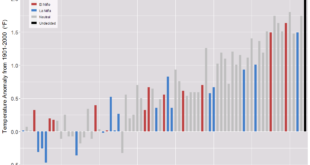 Kevin Drum answers the question in his post A Little Bit of Chart History for Wednesday. The phase out started in 1975. Why?
Kevin Drum answers the question in his post A Little Bit of Chart History for Wednesday. The phase out started in 1975. Why?
According to Nussbaum, EPA wanted places like California to reduce smog, and that meant cars would have to be fitted with catalytic converters. However, since gasoline lead ruins catalytic converters, refineries needed to produced unleaded gasoline. This was the initial impetus behind unleaded gasoline. The fact that it also reduced atmospheric lead was basically a happy accident.
Once that was done, however, EPA started looking more closely at the health effects of lead. It was no secret that high levels of lead poisoning were dangerous, but new research was showing that even moderate levels could be dangerous, especially in young children. So now EPA had two reasons to phase out leaded gasoline.
Drum’s post provides nice historical context on leaded gas, including this graph that may be the first graph produced showing a correlation between lead in blood and lead in gas (excellent artifact for use in a classroom). Read the article to find out about President Carter’s connection in all of this.
For further information read Drum’s essay Lead: America’s Real Criminal Element, published in Feb 2016. The lead crime connection has an element of environmental racism, which is not often discussed. In Statistics Materials you’ll find lead and crime data for linear regression and further information.
